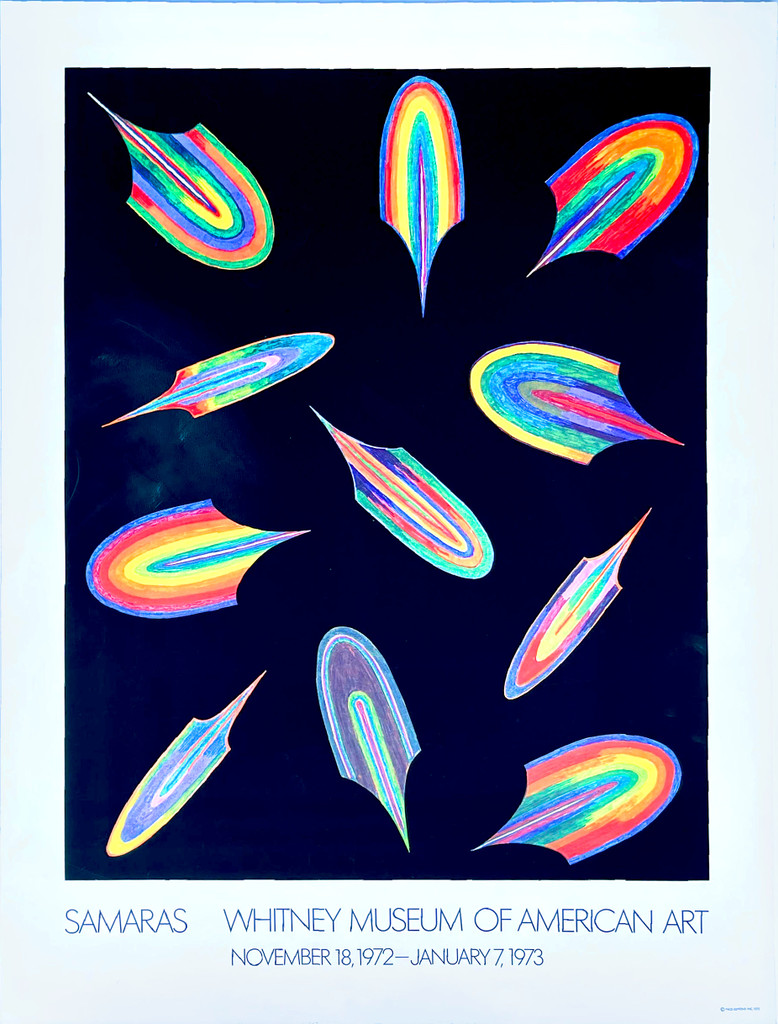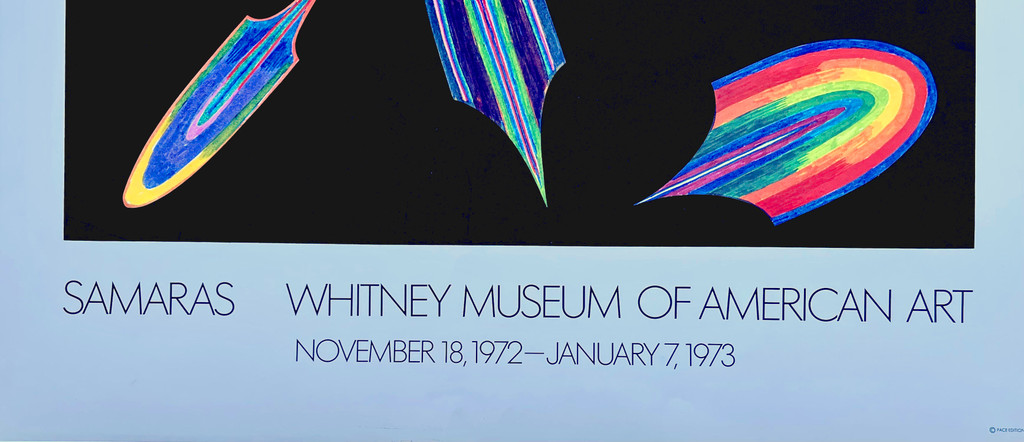
An Educated Collector is Our Best Client
In business for nearly two decades, we are a well established, popular contemporary art boutique specializing in expertly chosen, blue chip prints, multiples, uniques, books, ephemera and merchandise at different price points, with a focus on the secondary market. Please click on the "Contact Us" button at the bottom of this page for questions about any work, pricing and/or to arrange to visit our showroom/gallery - located in between Manhattan's Flatiron and Chelsea Flower Districts.
Lucas Samaras, Samaras at Whitney Museum of American Art Exhibition Poster, 1973
CONTACT GALLERY FOR PRICE
Description
Lucas Samaras
Samaras at Whitney Museum of American Art Exhibition Poster, 1973
Offset lithograph poster
Not signed
32 × 24 inches
Unframed
This early vintage poster was published for the Samaras exhibition at the Whitney Museum of American Art from November 18 to January 7, 1973.
Publisher
Pace Editions Inc.
About Lucas Samaras:
Eluding historical categorization, Lucas Samaras’s oeuvre is united through its consistent focus on the body and psyche, often emphasizing autobiography.
The theme of self-depiction and identity has been a driving force behind his practice, which, at its onset in the early 1960s, advanced the Surrealist idiom yet proposed a radical departure from the presiding themes of Abstract Expressionism and Pop art.
Samaras emigrated with his family from Greece to the United States in 1948, settling in West New York, New Jersey. He attended Rutgers University, New Brunswick, New Jersey, studying under Allan Kaprow and George Segal, and then at Columbia University, New York, where he studied art history under Meyer Schapiro. His interest in self-investigation began during this period, when he initiated painting self-portraits from the front and back using a mirror. He also gravitated toward the use of pastels, which enabled him to work quickly, exploring figurative and geometrical forms in rich colors and with luxuriant texture, characteristics that would reoccur throughout his work. He soon shifted toward objects, producing assemblage reliefs and boxes comprised of elements culled from his immediate surroundings and five-and-dime stores—cutlery, nails, mirrors, brightly colored yarn, and feathers—affixed with liquid aluminum or plaster.
His first New York exhibition was held at Reuben Gallery in 1959, which came on the heels of his first group show at the gallery, Kaprow’s 18 Happenings in 6 Parts. Through his involvement at the Reuben Gallery and his participation in Happenings, Samaras met Jim Dine, Red Grooms, and Claes Oldenburg. He had met Robert Whitman, another key figure in the Happenings movement, while at Rutgers and the two collaborated on performances. Samaras debuted his assemblage boxes in 1961 at Green Gallery, New York. For the artist, the boxes possessed elements of sculpture, architecture, and painting, amplified by the inclusion of objects such as mirrors and photographs—additions that situated Samaras as one of the earliest artists to emphasize his ego and corporeal self in his art. His early boxes led to his inclusion in his first institutional group show, The Art of Assemblage, held at The Museum of Modern Art, New York, in 1961.
In 1965, Samaras joined Pace Gallery, which mounted an exhibition of his works made between 1960 to 1966, that included Samaras’ immersive Room No. 2 (1966), also known as Mirrored Room. A culmination of his mirrored boxes, Room No. 2 was his first installation to become a part of a museum collection, acquired in 1966 by the Albright-Knox Art Gallery, Buffalo, New York. Samaras received his first major solo exhibition at The Museum of Modern Art, New York in 1969, which was followed by his first international museum exhibition, held at the Kunstverein Museum in Hanover (1970). By the mid-1970s, he had also received his first large-scale commission for which he produced Silent Struggle (1976), a sculpture comprised of Cor-ten steel, initially installed at the Hale Boggs Federal Courthouse in New Orleans.
In 1969, Samaras began to expand upon his use of photography, experimenting with a Polaroid 360 camera, which appealed to his sense of immediacy. His innovation further materialized with his use of the Polaroid SX-70 in 1973 in a melding of self-portraiture and abstraction, created by manipulating the wet-dye emulsions with a stylus or fingertip before the chemicals set. This processed progressed with digital art in 1996 when he obtained his first computer and began to experiment with printed texts on typewriter paper. By 2002, he had acquired a digital camera and the use of Photoshop became an integral component of his practice. These technologies gave way to Photofictions (2003), a series characterized by distorted self-portraits and psychedelic compositions.
Gesturing toward a larger investigation of (self) reflection in his work, found in his mirror rooms, self-portraiture, and use of digital mirror-imaging, Samaras’s oeuvre acts as an extension of his body while underscoring the transformative possibilities of the everyday—a true blurring of art and life.
Courtesy of Pace Gallery












